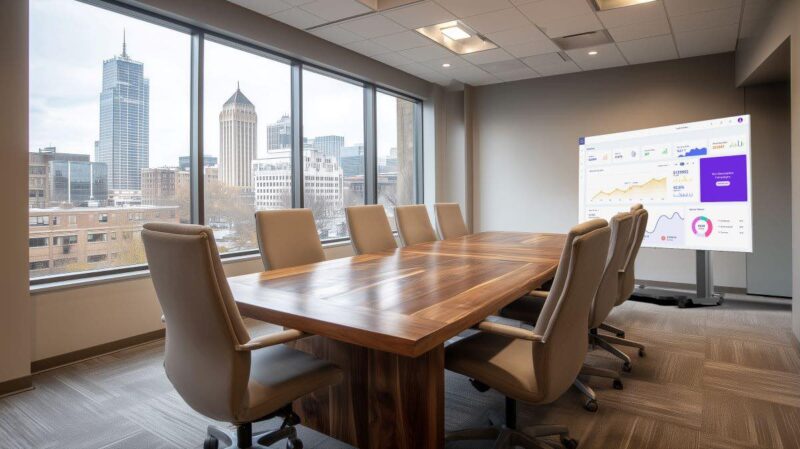Looking for a New Display? Save Your Energy!

Image courtesy of PPDS
By Mitchell Rosenberg
PPDS
If you’re in the business of buying visual displays, you already know of the various considerations you need to make depending on how the device will be used, where and by whom.
Is the screen big enough to be seen clearly from the other side of the room? Is the pixel pitch sufficient that the screen can be viewed from close-up? Is the bezel narrow enough to allow for multidisplay installations?
All remain fundamental decisions in creating the desired experience, whether for a handful, dozens, hundreds or even thousands of displays in single or multiple locations. And, with a growing focus on sustainability, coupled with the escalating pressures being faced due to rising utility costs, the energy efficiency of displays and the running costs associated with them, are increasingly critical factors. Even with various recent government interventions and price caps, the outlook in the short term, and unpredictably into the future, is far from reassuring. Managing costs and an eye on ROI has never been more in focus.
The needs and reliance for these displays, whether a creative and eye-catching video wall in a retail store, digital signage and interactive displays in a corporate office or a school classroom, have not changed. To reduce the financial burden, though, businesses must, or at least should, now take a more strategic approach. There are several factors to consider.
Mitchell Rosenberg, director of dvLED and X-Line for PPDS, is speaking during LAVNCH WEEK 6. Click below to join him and earn 2.5 AVIXA CTS RUs per day!
 Take Control
Take Control
It may seem obvious, but some people still seem to need a reminder that if nobody is looking at a display, it could be a good idea to switch it off, or at least to power it down. Easier said than done, of course. Or is it? Today, modern displays will have remote management capabilities and either built-in or compatible software.
Displays, be it dvLED, digital signage, interactive touch screens or professional displays, will sometimes feature ‘smart power’ tech, automatically adjusting based on use. Alternatively, these can be entirely micro-managed to the smallest detail, from switching off between specific hours (such as offices, public venues or retail stores — away from windows), reducing brightness depending on the time of day. For environments, such as transportation hubs (including airports) or retail storefronts, the savings could be substantial. Standing still is a costly exercise.
Equally, remote management platforms can help system integrators and their customers to manage this important element, with the ability to power down one, some or all displays at the touch of a button, saving not only on energy consumption, but on fuel bills and time spent, too.
All of these solutions could also extend the lives of displays, resulting in lower maintenance costs and less frequent need to invest in replacements.
Less is More
Finally, it is important to choose the right technology. Does the environment really warrant or benefit from 4K? Is LED or LCD the way forward?
Direct-view LED displays, in many instances when comparing like-for-like sizes, will consume less energy than their LCD counterparts. So, by replacing old LCD screens with dvLED displays could be an immediate cost saver for energy consumption. Also, while the LED display is more modular, allowing for partial replacements for faulty sections, its lifespan is significantly longer than that of an LCD.
With the rise of dvLED adoption, and a natural lowering of costs, dvLED displays can be designed to deliver proven low energy consumption — between 20%, and in some instances, as much as 50%, when compared to similar products on the market, without compromising on performance. In fact, dvLED often provides other advantages such as wide-viewing angles, zero-bezel, low to zero haze which sharpens content in brightly lit environments.
Behind the stunning videos of flowers, animals, and cityscapes you might see broadcast on various displays or all shapes and sizes on a showroom floor, or an exhibitor’s booth during an event like InfoComm or ISE, it is always worth diving below the surface. When it comes to electricity, you’d be amazed to learn how much you can save.
Mitchell Rosenberg is speaking on “The Digital Signage Ecosystem” during LAVNCH WEEK 6. Click here to register and join him at this free event.





